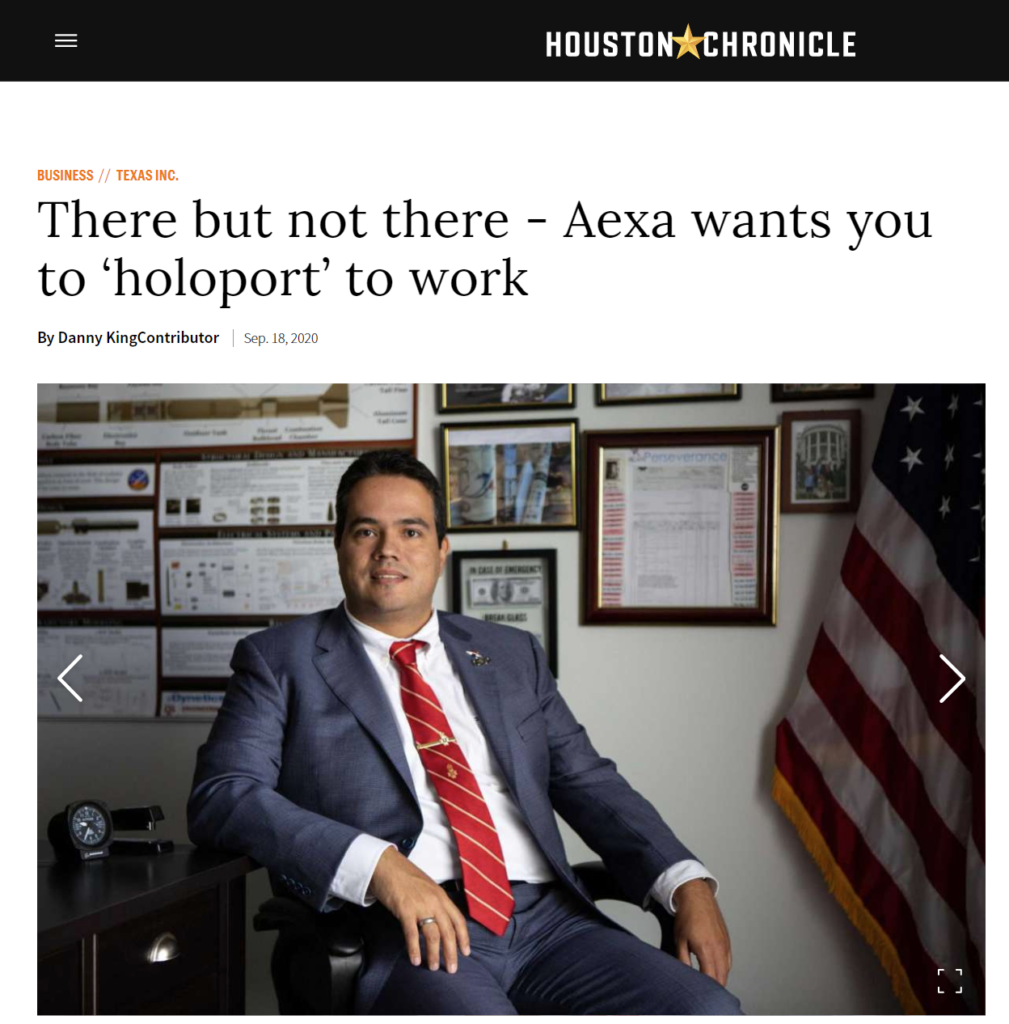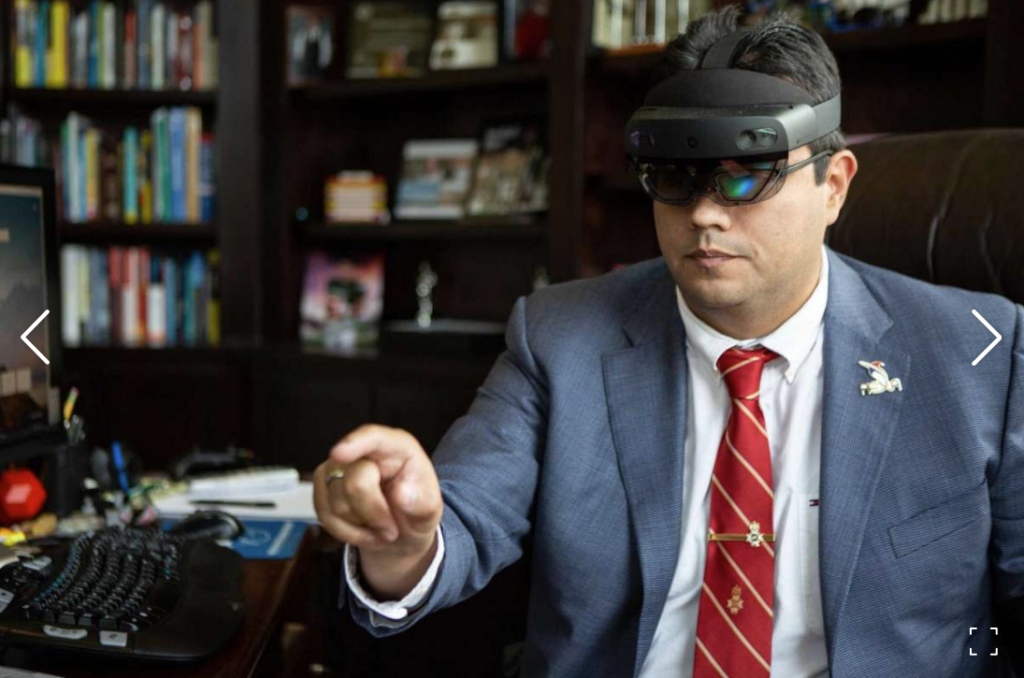Houston Chronicle
categories: Aexa News, HoloWizardThere but not there – Aexa wants you to ‘holoport’ to work

Having pioneered technology that’s been used in outer space and underwater, Fernando De La Pena believes his company’s next frontier is either the at doctor’s office or on the oil rig.
Houston-based Aexa Aerospace, which has long specialized in developing software and communications technology for NASA and defense contractors such as Lockheed Martin Corp., Raytheon Technologies Corp., and Teledyne Technologies, is preparing to market the most recent iteration of its so-called “holographic Teleportation” product.
In layman’s terms, holographic teleportation is an augmented reality (AR) training application in which users don special lenses in order to receive three-dimensional instruction from someone off-site whose image is projected through the lens via a hologram. For example, the application can allow an engineer to simulate a “walk” through a space station, or for a doctor to “appear” in a patient’s home.

Aexa Aerospace, whose name is derived from a combination of “aerospace” and “exabyte” (which is equal to 1 billion gigabytes), first tested its holographic teleportation technology as a potential medical device last year. At the time, the company worked with NASA on a simulation in which a NASA surgeon was “holoported” from the agency’s Houston headquarters to Florida’s undersea Aquarius laboratory to evaluate a patient, according to De La Pena, Aexa’s CEO.
With the success of that simulation, Aexa, which has 17 employees, most of whom are Texas, has fined-tuned the product into what it calls HoloWizard, which debuted earlier this year and allows for both one-way (where the lens-wearing recipient receives the holographic imaging) and two-way holographic teleportation (where both parties use the lenses and receive 3D images of the other party).
De La Pena says HoloWizard’s uses can range from training employees on far-flung oil rigs to simulating a deployed soldier sitting down for a meal with his family and to medical consultations.
“Imagine I’m trying to instruct somebody to perform CPR. If I’m in Texas and my partner is in Alabama, the person in Alabama can see a holographic representation. He can put his hands over my hands,” said De La Pena. “You can’t do that with a two-dimensional video conference.”
HoloWizard is the most recent step in De La Pena’s evolution within Houston’s technology sector. For about a decade prior to founding Aexa Aerospace in 2012, De La Pena was an engineer for MEI Technologies, whose work with NASA included building communications tools that relayed information about potential damage to the International Space Station.
In Aexa’s early days, the company built virtual-reality (VR) training programs for Raytheon, and has worked with the company at developing 360-degree video tours NASA’s 6.2-million-gallon Neutral Buoyancy Lab.

De La Pena said the company is now seeking to expand its client base beyond government contractors by pitching the medical and exploration fields. And while COVID-19 has hampered many of the region’s industries, De La Pena said the pandemic may speed up the adoption of products such as HoloWizard because of travel restrictions.
“Before COVID-19, everybody used to see this technology as a secondary option to travel,” he said. “Now people are saying, ‘we need to use this technology because I can’t travel now, and I don’t know if I can travel next year.”
De La Pena declined to disclose his company’s annual revenue, though said his business was “sustainable” and “still growing” in 2020. He also downplayed any concerns about larger companies getting wind of HoloWizard’s capabilities and potentially developing something even more advanced.
“There’s always that concern, but it’s a huge advantage that we are small and can move very fast,” he said. “If you don’t have multiple companies trying to bring solutions to the table, the technology will be dead. So I like the competition.”




